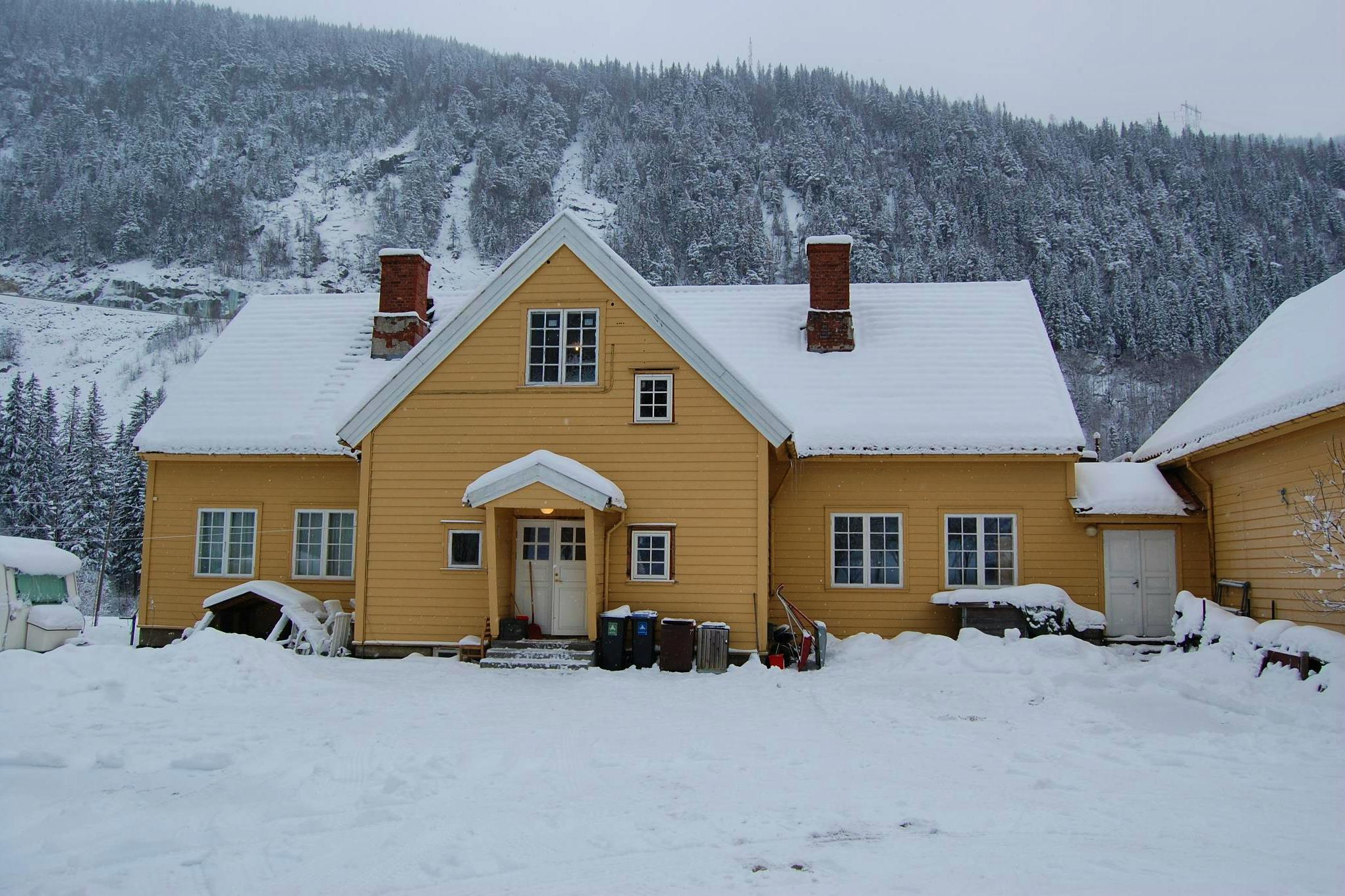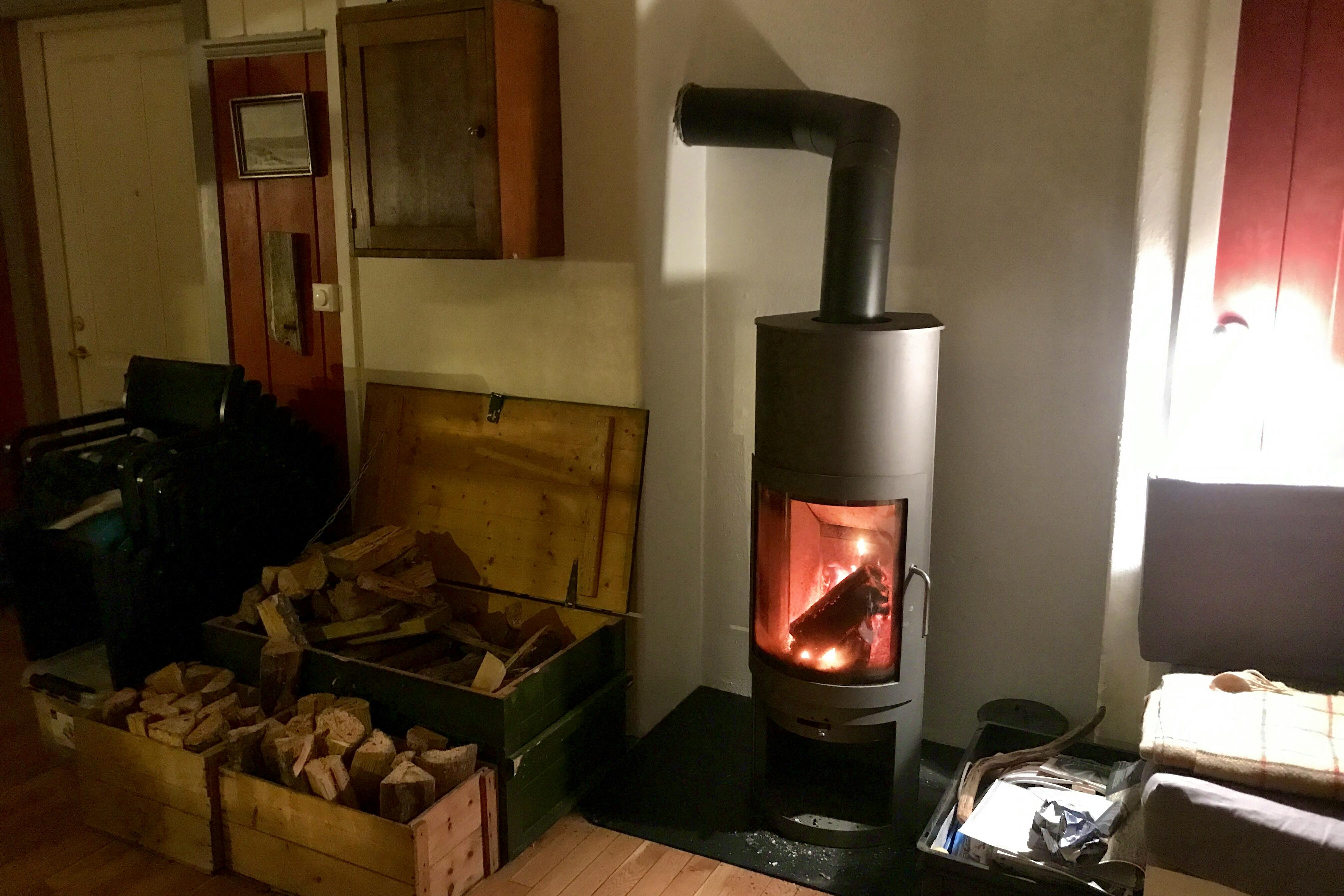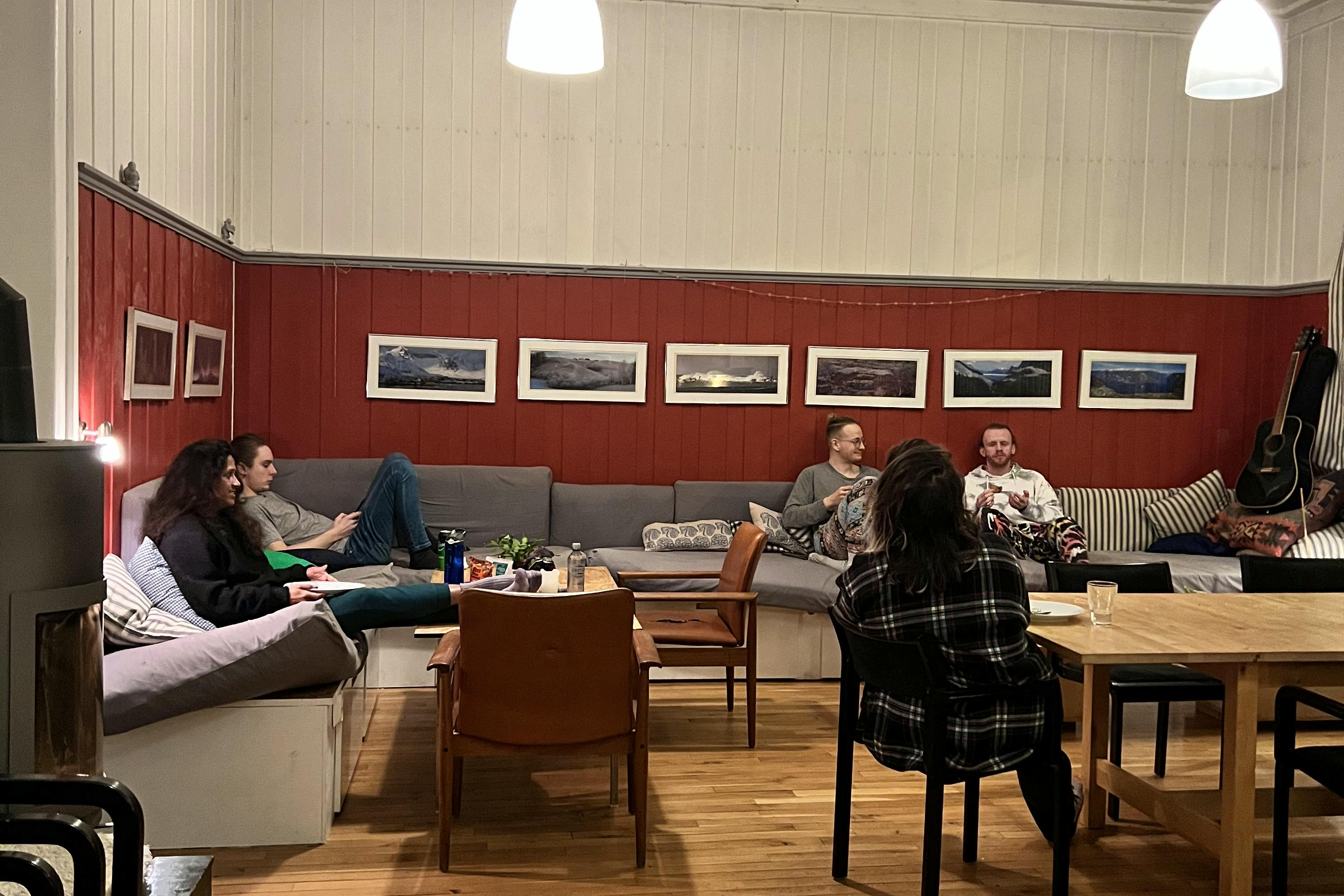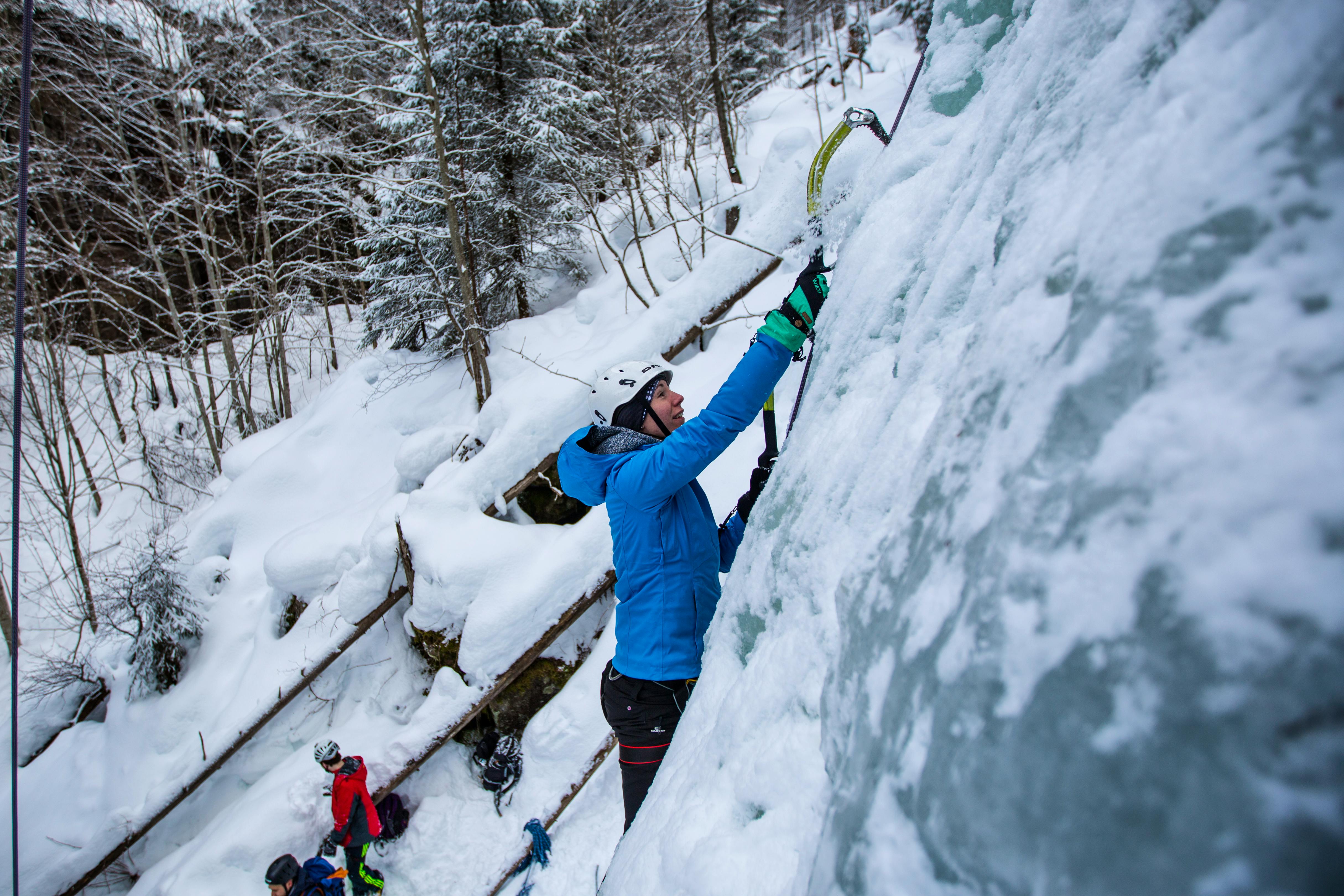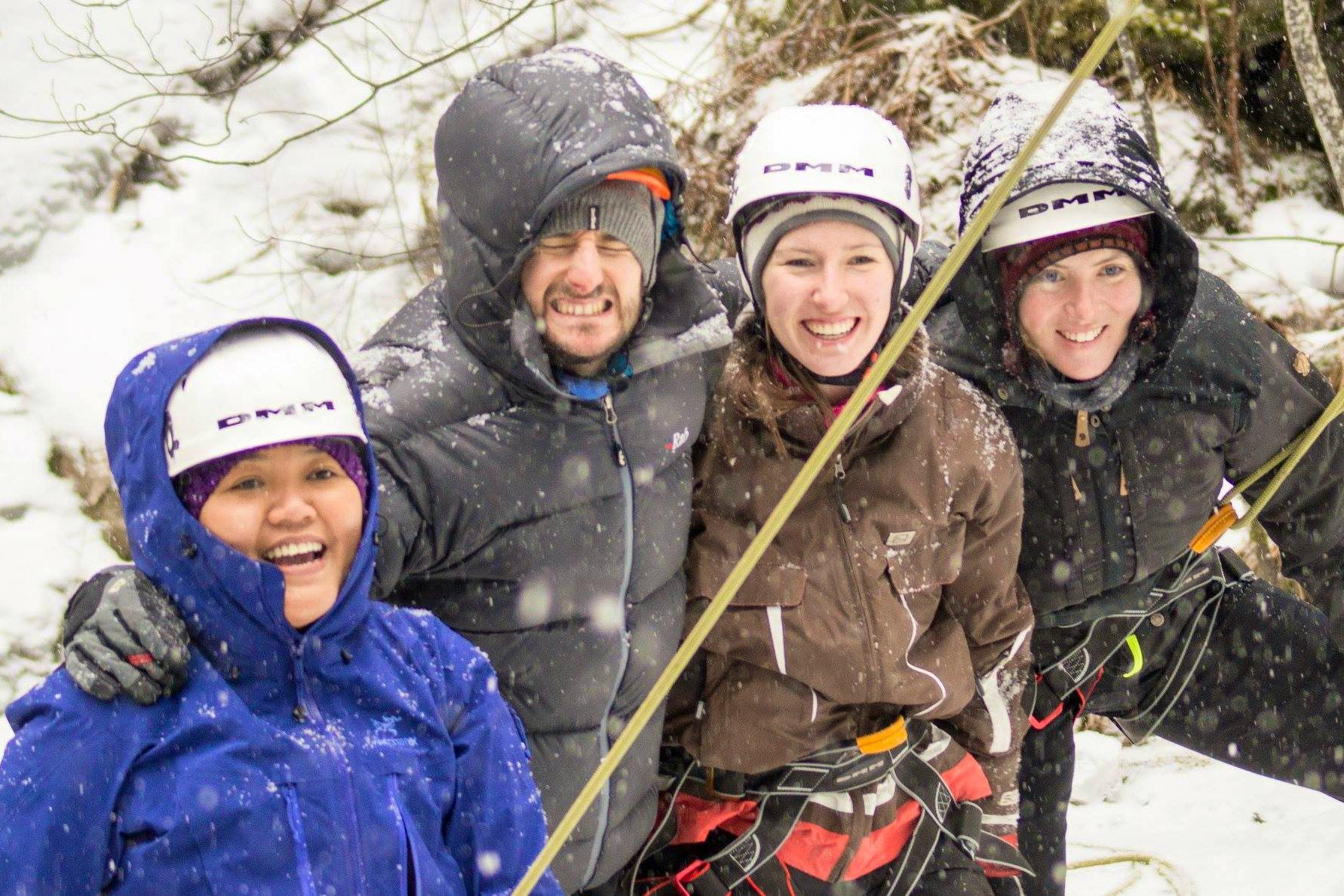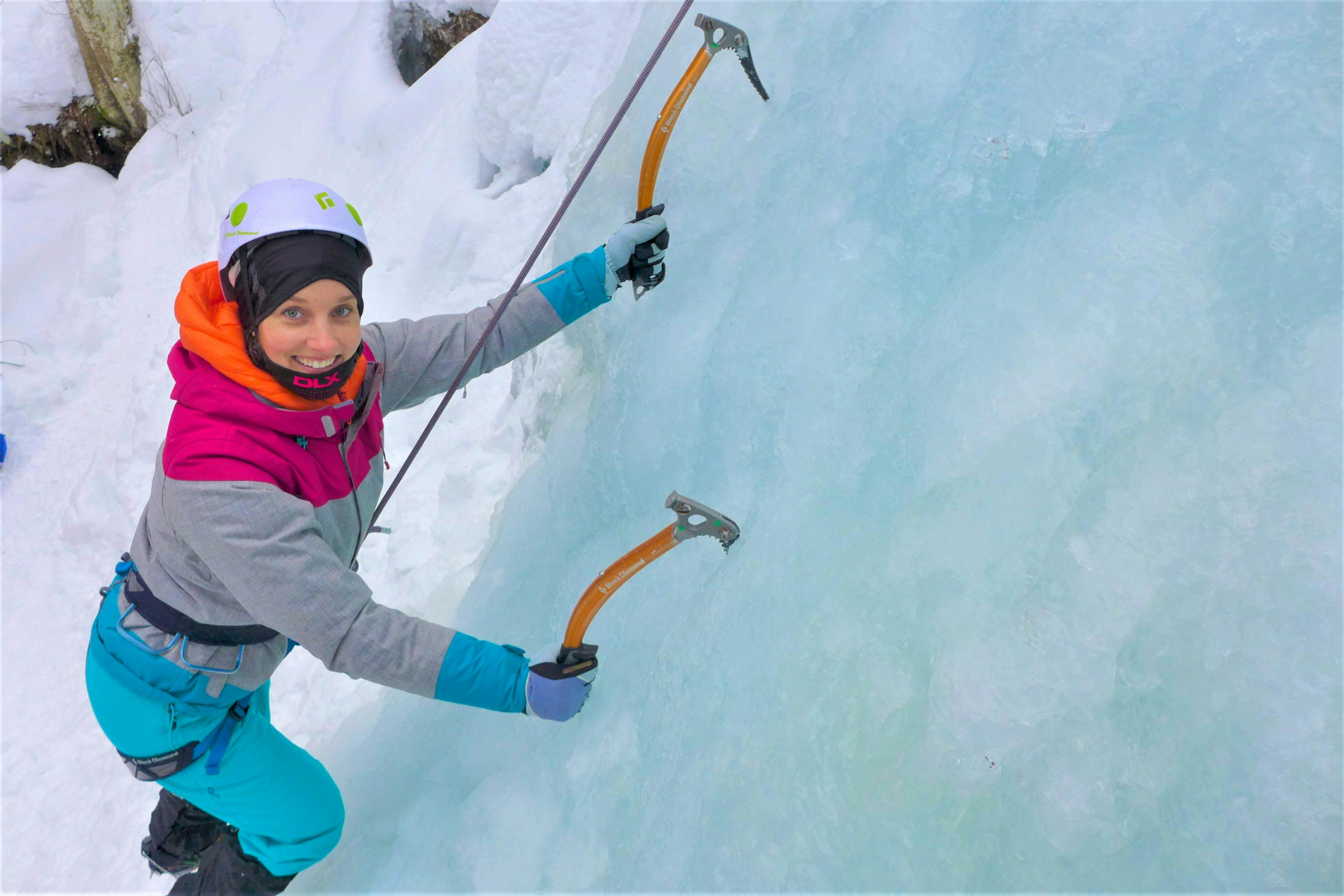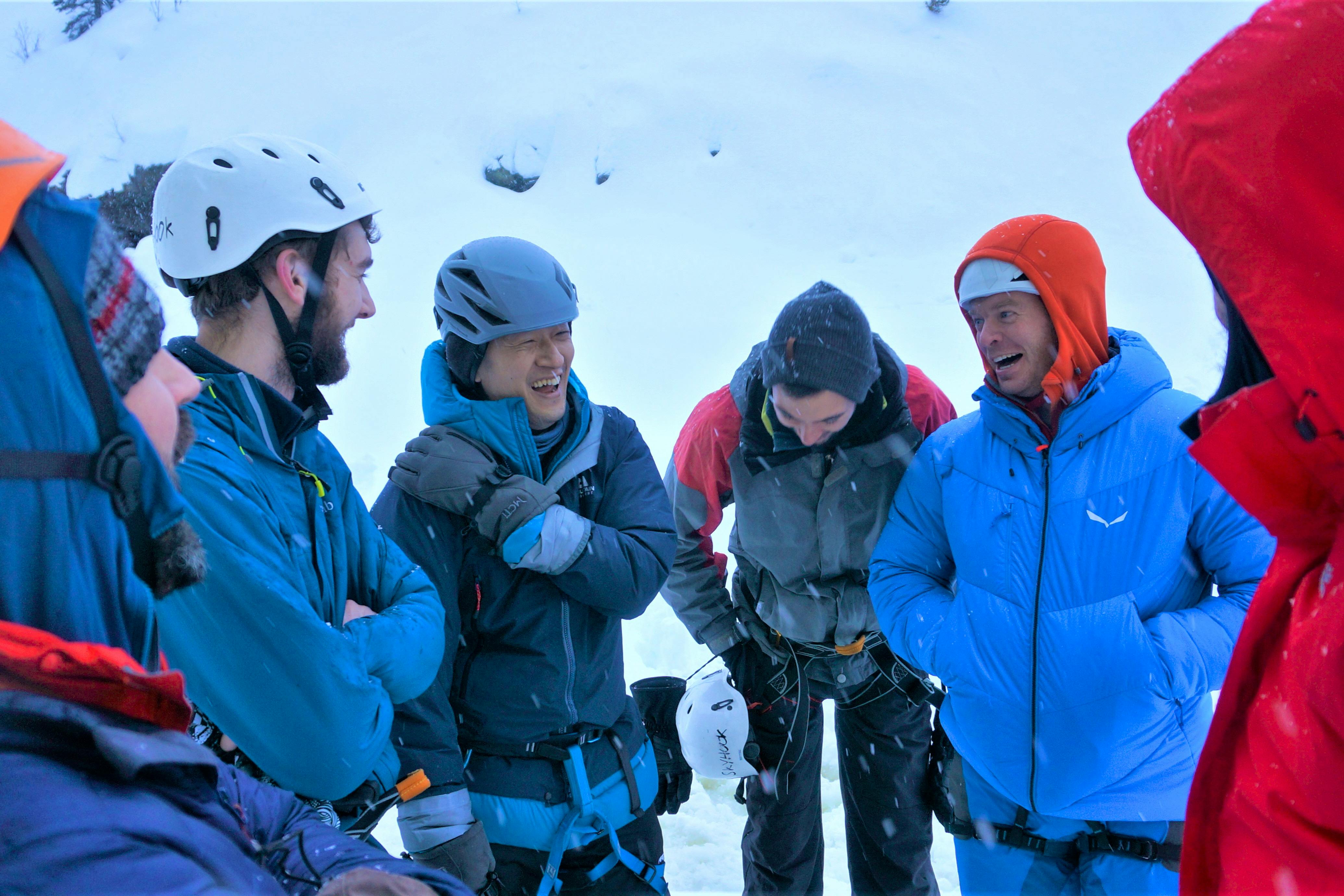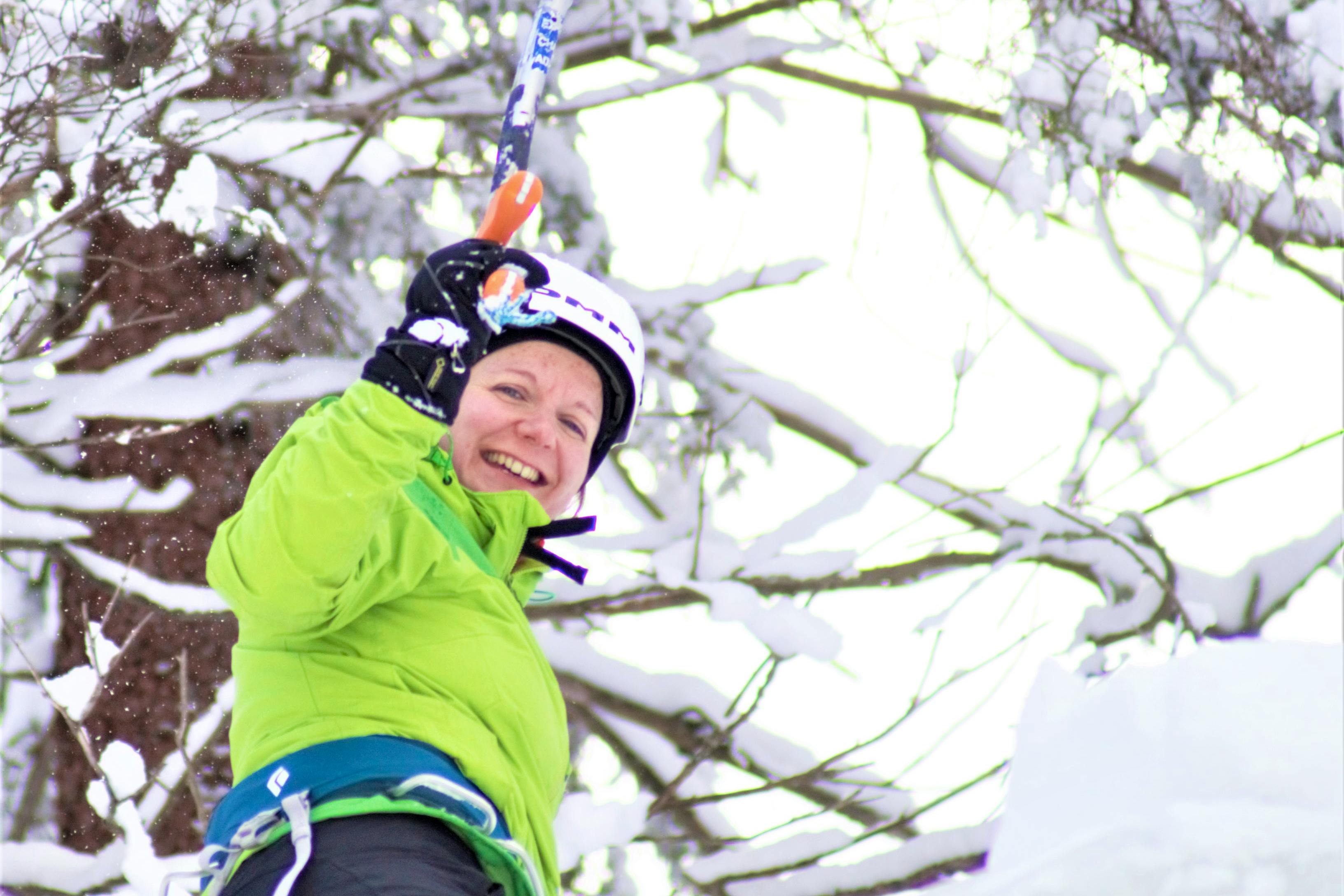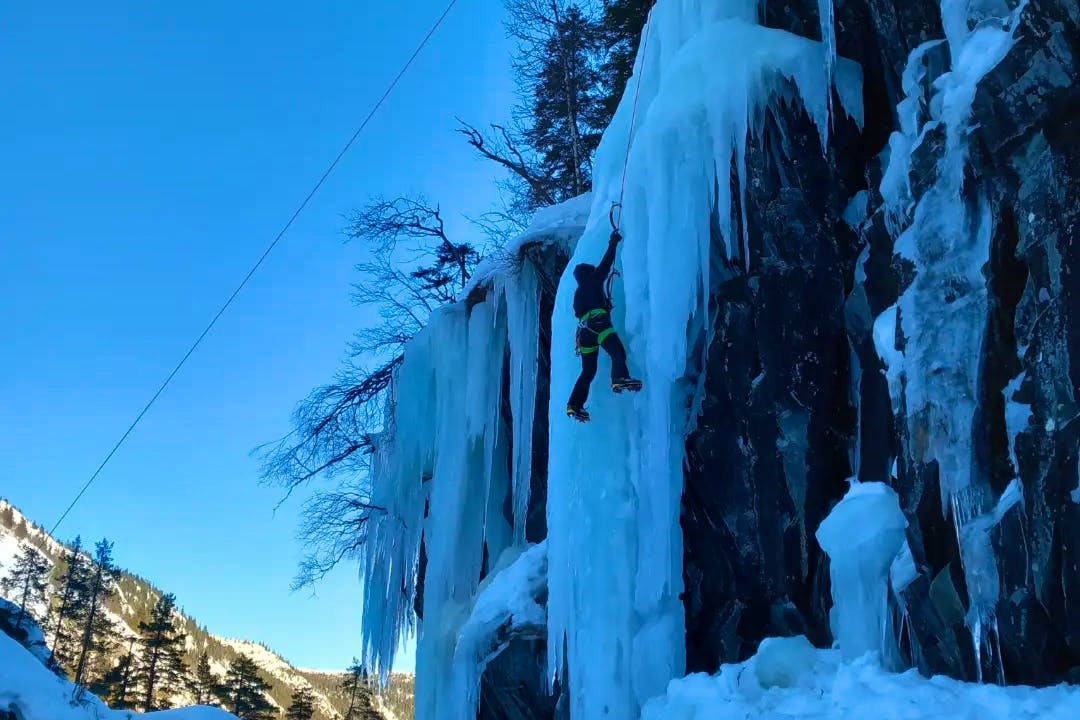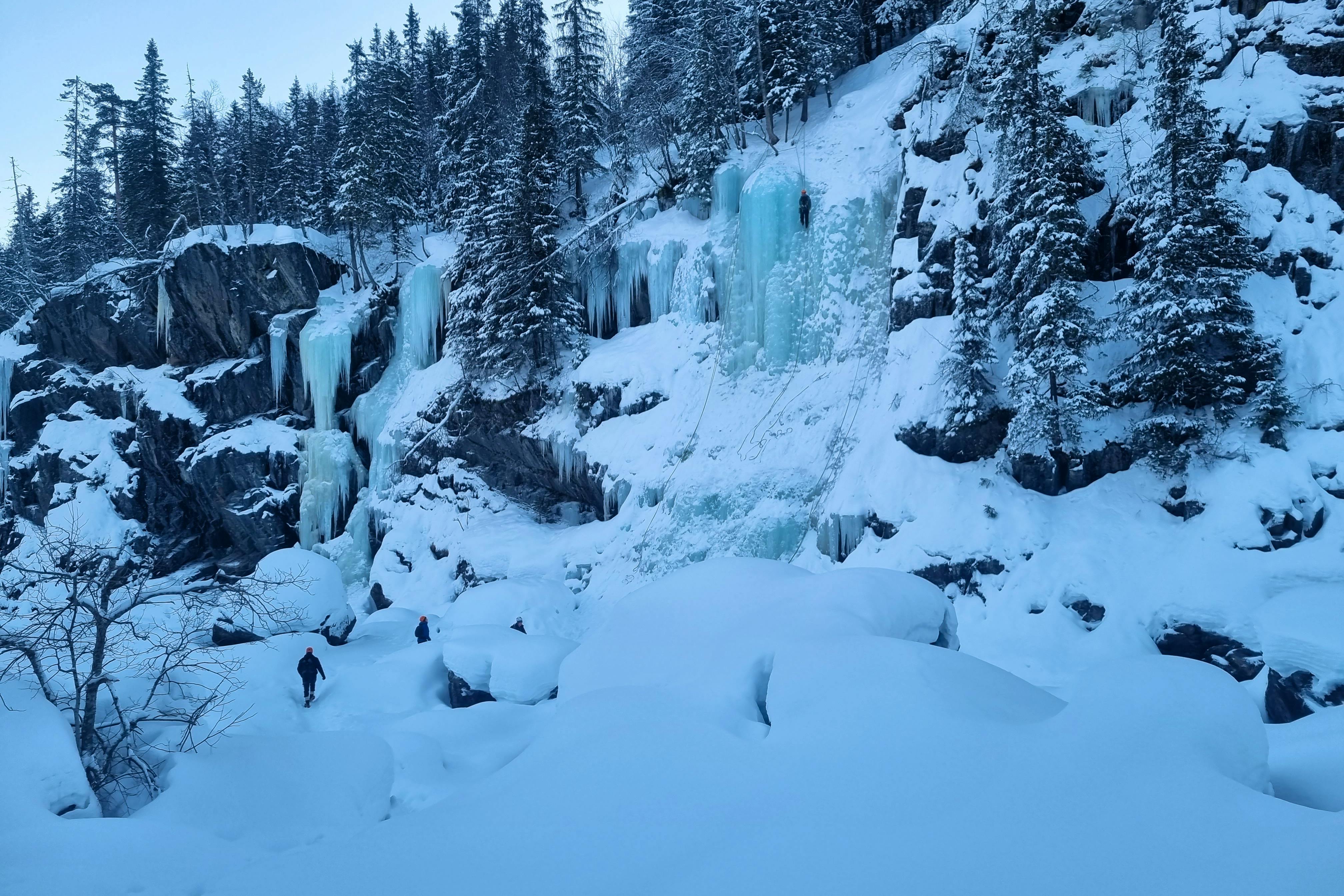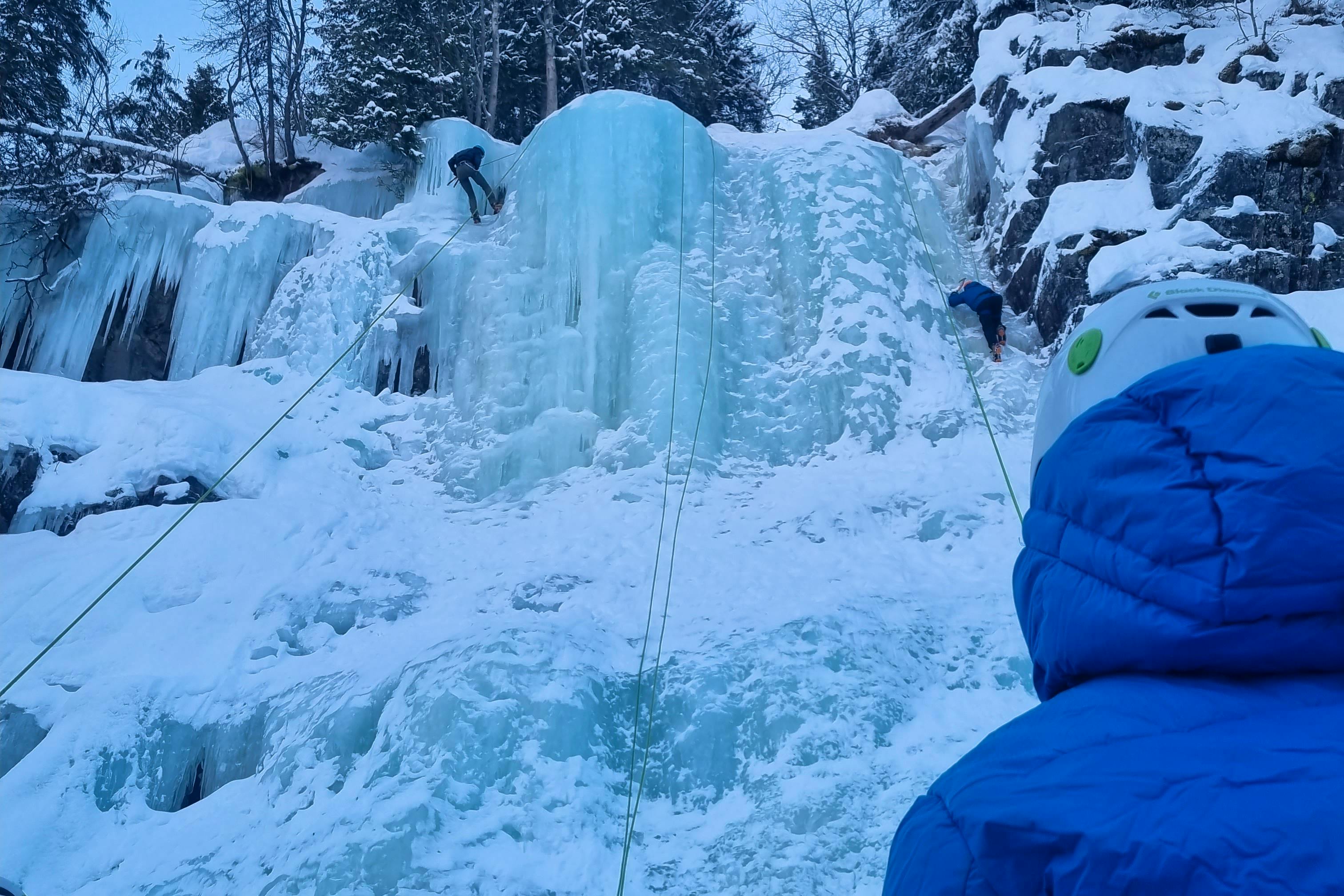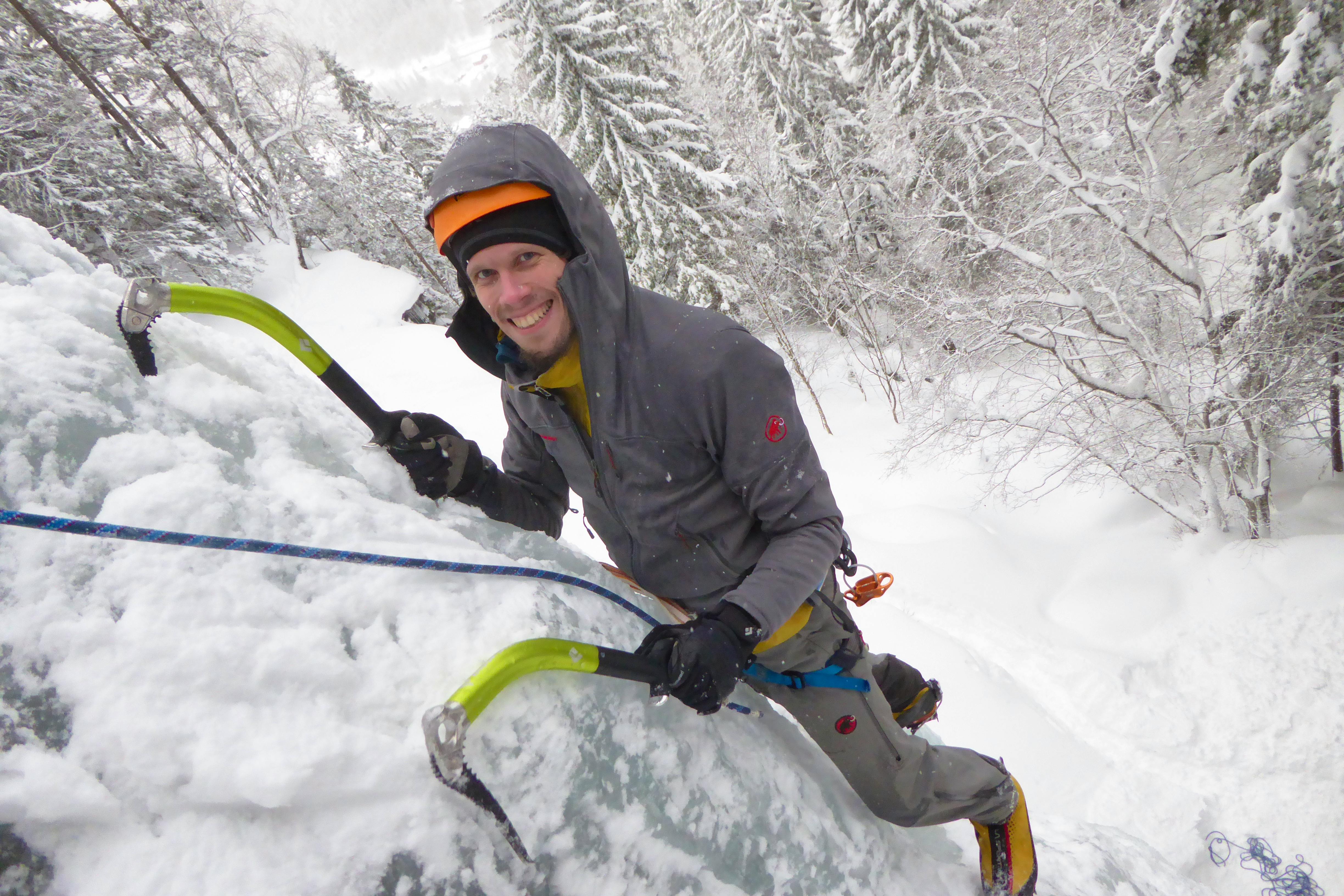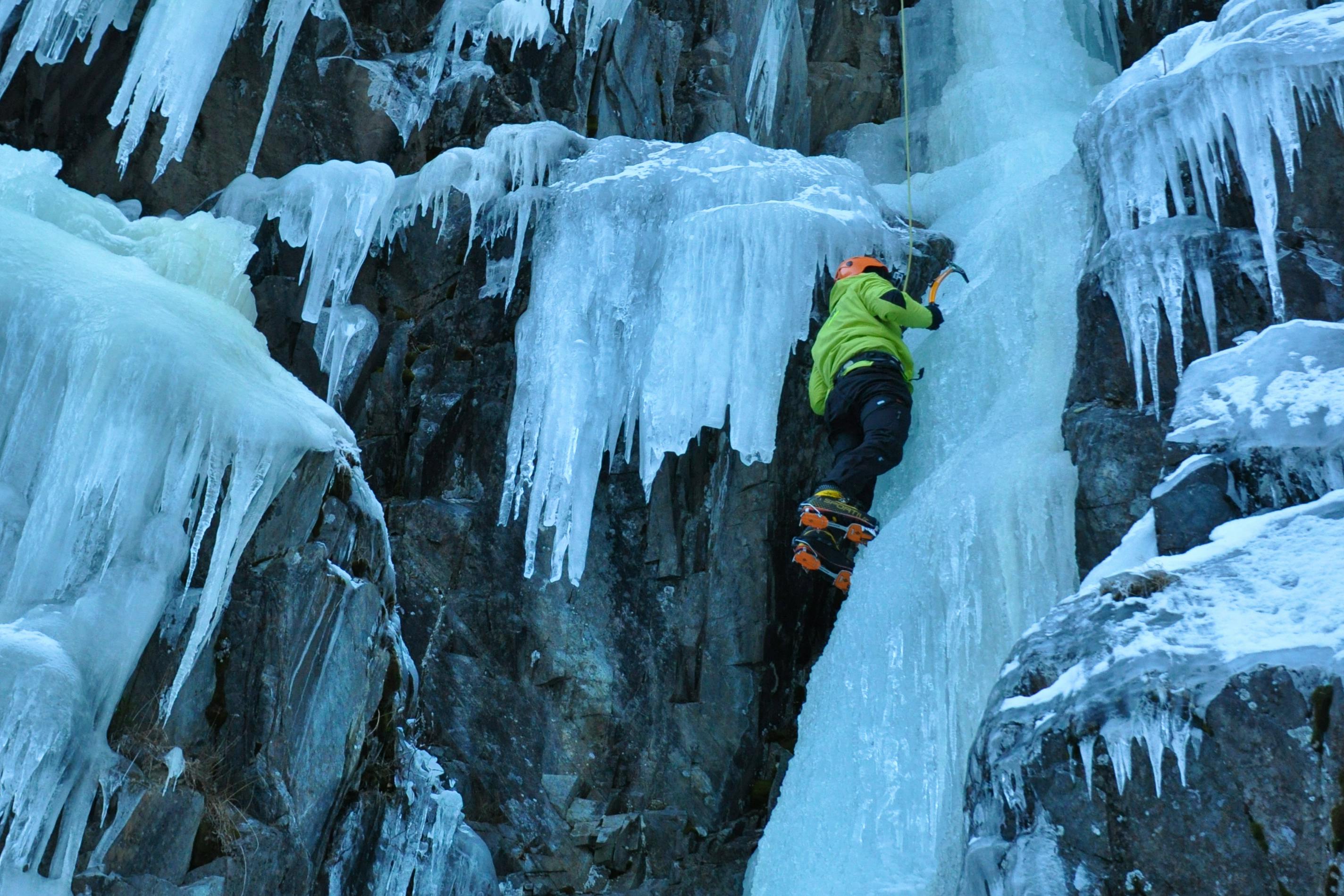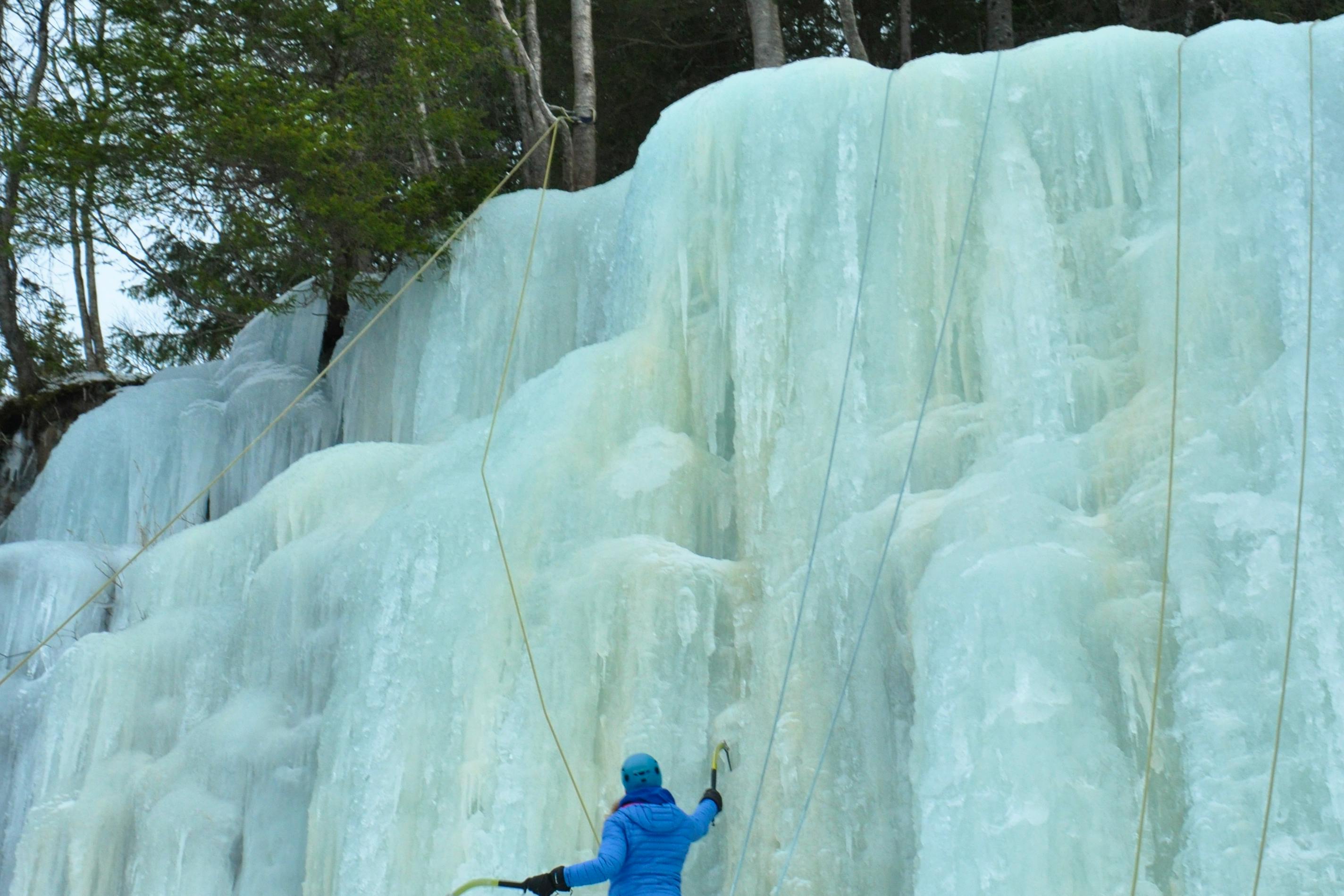Beginners Ice Climbing


This is a course for total beginners to try ice climbing in one of Norway's most incredible environments.
Itinerary
We meet in Rjukan - a picturesque Norwegian town. You'll be staying in the Old School Hostel, which is simple yet comfortable, and can arrive at any time throughout the day.
If you arrive early, we highly recommend taking advantage of the hostel's Sauna!
Note that this is an instructive course, and you will need to arrange your own food and transport (see FAQs for more information).
We leave the hostel at 9 AM after breakfast for a full day of ice climbing at Ozzimosis.
The focus is getting into the swing of it and developing good movement techniques. Your guides will set up climbs at all levels of difficulty so that there's something for everyone - from almost hiking right up to completely vertical!
In the evening you'll have an opportunity to cook a meal and relax with the other climbers, back in the hostel.
The last day is at Krokan, where you walk on a frozen river to an incredible location, usually with over 30 frozen waterfalls!
There is a huge range of climbing routes here, so your guides will pick them carefully to make sure there is something for everyone. The shortest routes are about 6 meters tall, and the tallest ones are nearly 20 meters.
For those who want to, you can also learn some more skills, such as ice screw placement and building winter belays.
We finish at 3 PM and debrief in time to catch the last flights home from Oslo.
NB! If you can't find a cheap flight home on Sunday, you can stay an extra night at the hostel. You are welcome to book an extra day of ice climbing directly with Rjukan Oldschool Hostel.
Book Now
Sorry - we currently have no available dates.
To enquire about upcoming trips or to arrange a private excursion, kindly contact us.
You may also like: Ice Climbing Improver Course or Advanced Ice Climbing
What's Included
Included
- Professional guides.
- Accommodation in the Rjukan Ice Climbers hostel (called Dale Skole).
- Technical equipment (helmet, harness, ice axes, crampons etc).
- Winter mountaineering boots: See FAQs.
Not Included
- All transport, including transfers to/from the airport and climbing areas. See FAQs.
- Meals: See FAQs.
- Travel insurance.
Have a question?
If you have any questions about this trip or want to speak with an expert, get in touch.
We're ready to help.



Rated 5.0
107 verified reviews
Rachel
(Mar 2025)
Tabitha
(Mar 2025)
Michael
(Feb 2025)
Phillip
(Feb 2025)
Arianna
(Feb 2025)
FAQs
Before you go
There are two main airports serving the area: Oslo-Gardermoen and Oslo-Torp. Oslo-Gardermoen (north of Oslo) is the main airport where most international flights arrive. However, Ryanair uses smaller airports, so they also fly to Oslo-Torp (southwest of Oslo). Rjukan is about 2.5-3 hours west of Oslo.
You have a few options for getting to Rjukan from the airport:
1. Share a rental car
When you sign up, you're added to a group chat on your Skyhook dashboard. We highly recommend chatting here with the other participants (each group has 12 people), as most people arrange car-sharing to get to Rjukan from the airport. Splitting the cost of a rental car is typically the cheapest and fastest way to travel. If you do this, we recommend allowing 3 hours for the drive so that you can take your time and have a break along the way (you'll be going past a beautiful frozen lake). Renting a car means you can easily get to and from the climbing sites.
If you rent a VW Golf for three days (in January), it should cost around 1500 Norwegian Kroner/NOK (roughly £110). If you add the price of fuel, it's more like 3000 NOK (roughly £220 ).
2. Buses and trains
If you fly into Oslo Gardermoen airport to Oslo, there are buses and trains. The central bus station and train station in Oslo are 500 meters apart, which makes it easy to switch transport.
If you fly into Oslo Torp airport there is a bus heading towards Oslo (check this website for schedules: torpekspressen.no ). If you take the bus from Torp towards Oslo, you will have to get off at the Lysaker stop. The bus towards Rjukan also stops at Lysaker, so it's possible to switch to a bus directly to Rjukan instead of first going to Oslo.
From Oslo to Rjukan, it is about 2.5-3 hrs west by bus. You can look at schedules and prices on this website: vy.no
• Passport
• European Health Insurance Card (if appropriate)
• Travel insurance details
• Boarding passes for flights
• Wallet
• Driver’s license & rental car details (if needed)
Clothing:
Please make sure all clothing is not cotton – cotton clothing is great for the summer but loses heat very quickly in the winter.
• Two base-layer t-shirts (e.g. running t-shirts)
• Fleece/soft-shell jacket
• ‘Booster layer’ e.g. second fleece
• Waterproof jacket
• Down jacket for warmth, if possible (from e.g. Rab, Alpkit, Mountain Equipment)
• Spare clothes for evenings
• Underwear
• Base-layer trousers (optional)
• Soft-shell trousers or other warm trousers
• Waterproof trousers
• Swimwear for the sauna
• Two thick wool mountaineering socks
• Two pairs of waterproof/snowproof gloves or mitts
• Wool hat that can be worn under a helmet
• Comfortable boots/shoes for travelling. You can also bring mountaineering boots if you have them. But otherwise, you'll be loaned specialist mountaineering boots for the full days of climbing.
Other:
• Small rucksack
• Water bottle/thermos
• Sunglasses
• Glasses/contact lenses (if needed)
• Sleeping bag liner for the hostel (you can rent sheets if not owned)
• Bathroom items, including towel
• Electronics - head torch, travel adaptor (French plug style), phone & charger
• Lipsil
• Book/mp3 player for flights
Climbing Equipment (optional):
If you own any of the following, you may bring them along as well:
• Harness
• Helmet
• Ice axes
• Crampons
The guides are fantastic at picking out climbs that you will be comfortable with trying, and helping you develop at your own pace. Equally, if you prefer something very challenging, the guides can also set up routes that are very steep/overhanging if you want. There is something for everyone!
We suggest specialist adventure travel insurers, Rise & Shield. They cover 100s of activities and are easy to deal with if you need to make a claim.
They also cover unique scenarios, like trekking at altitude or emergency evacuation in hard-to-reach places, that ordinary travel insurance doesn’t cover.
Other popular providers include the BMC, Snowcard, and Dogtag Insurance.
On your trip
The local supermarket has a broad selection, with equivalent prices to a higher-end supermarket in the UK (e.g. Waitrose). It's a 5-minute drive from the hostel, but it is also possible to walk there.
There are limited takeaway options in town, including pizza.
We have good cooking facilities, warm showers, a sauna, Wi-Fi and a drying room.
There is no reception desk – if you arrive early, just come inside and make yourself tea or coffee. Jakob is the hostel owner and the lead guide.
Bed linen is all included.
Other FAQs
The hostel price is 350 NOK (approx 25 GBP) per extra night, increases may apply for future seasons.
Mid-season (January) usually has more ice but later in the season (February-March) there are longer daylight hours and it is usually warmer. Note that is only as a general rule, each year can be different.
When it comes to the ice, the conditions in March are often still very good for the beginner course. Over the last 3-4 years, conditions in March have been very good. Of course, there are no promises when it comes to the climate!
Your head guide is Jakob
All trips on Skyhook are run by small, hand-picked local guiding companies. For this trip you'll be led by Jakob and the guiding team based in Rjukan.
By booking through Skyhook you'll be joining a small-group trip. This can make it nice and sociable (you'll be added to a group chat after booking), and guarantees great value for money!

Why Skyhook?
Join over 27,000 Skyhook adventurers who've used our platform to book directly with our vetted local guides, at local prices (we never markup).
Expert Local Guides
Experienced local guides, handpicked by us.
Best Prices
Never pay a markup on the local guide's price.
Exclusive Club
Earn loyalty rewards every time you travel.
Great Social Vibes
Small group tours provide a richer experience.
Stellar Feedback
Over 2,800 reviews, average of 4.9/5 stars.

